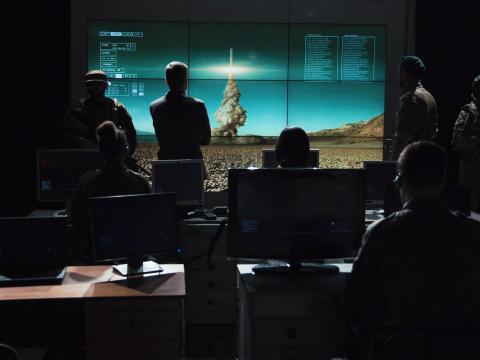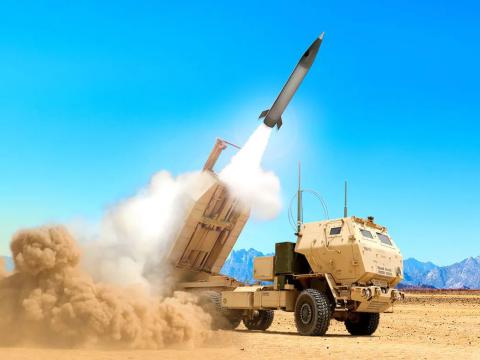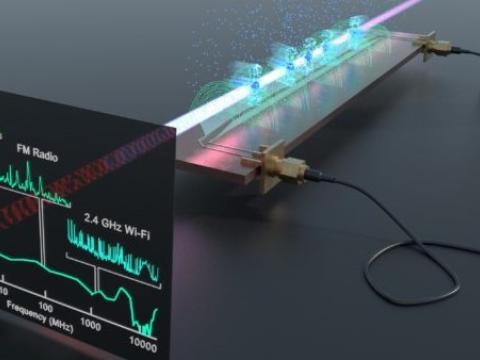Prototype Improves Command and Control of Intelligence Data
The U.S. Air Force soon will begin installing a new system to aid intelligence, surveillance and reconnaissance planning and tasking.
Possibly as early as this month, U.S. Air Force officials will begin installing a prototype system that supports the command and control of intelligence, surveillance and reconnaissance information. The system dramatically reduces manual labor and cuts the planning development process from hours to minutes, allowing warfighters to focus on the mission.
The Deliberate and Dynamic Intelligence, Surveillance and Reconnaissance Management (D2ISRM) system provides more machine-to-machine communication, reducing the slow, manual work involved in planning and assigning tasks for ISR assets such as Predator, Reaper and Global Hawk unmanned aircraft. The D2ISRM is expected to begin a “limited early install” into the Air Force’s Air and Space Operations Center Weapon System (AOC WS), reveals Perry Villanueva, program manager of the Air Force Command and Control (C2) Constellation program at Hanscom Air Force Base, Massachusetts.
The AOC WS is the Air Force’s command and control center for planning, executing and evaluating joint air operations during conflicts. Earlier this year, the service awarded a potential $504 million contract to Northrop Grumman Corporation’s Information Systems sector, McLean, Virginia, to modernize the AOC WS. The modernization effort will move the operations center to a single computing environment, eliminating the need for warfighters to search myriad systems for different types of information, enhancing the speed of command and enabling more effective mission planning and execution.
The limited early install is a risk-reduction effort intended to test new capabilities for the operations center. “We expect that by participating in the limited early installation, D2ISRM will gain more exposure with the operations world and that it can then be matched up with an appropriate program of record to fully transition the effort,” Villanueva states. “Work is still ongoing to find a program of record to transition this capability.”
Currently, as operators receive various ISR requests, they have to consider a wide array of variables, including which assets are available and mission appropriate, as well as combat conditions, such as weather and the locations of hostile forces. Essentially, the system narrows down the available options so that warfighters can make more informed decisions at a faster pace.
The system works with both deliberate and dynamic command and control. “Deliberate command and control of ISR planning is done on a daily basis to build an overall ISR plan. These plans can be quite complicated, as they involve many assets, airspaces, collection targets and so on. The plan must orchestrate all of these variables in order to maximize collection coverage and sensor utilization,” Villanueva explains. “Dynamic command and control occurs when the deliberate plan must be disrupted because of changing needs—for example, an emerging high-priority collection target. The ultimate goal of dynamic ISR management is to make changes that service the new collection while minimizing perturbations to the rest of the plan.”
The D2ISRM prototype was evaluated earlier this year during an operational demonstration. For demonstration purposes, warfighters from the 102nd Air Operations Group at Otis Air National Guard Base, Massachusetts, simulated an intelligence cell and found that the system significantly decreased data processing time. “D2ISRM has the potential to work with a wide variety of piloted and unpiloted ISR. In the April operational demonstration, however, we bounded the prototype to Predator, Reaper and Global Hawk aircraft to limit the development complexity,” Villanueva says.
For the demonstration, the team compared the D2ISRM process with current manual processes. For deliberate planning, players using the manual process were stopped after 4.5 hours, although they reported needing more hours to complete the ISR plan. Players equipped with the D2ISRM were able to complete the plan in less than 30 minutes. For dynamic planning, Villanueva describes three ad hoc ISR task requests. During these stages, the time was cut by at least one half. For the first task, the manual process took 10 minutes; the D2ISRM took five. For the other two tasks, the comparative times were 23 minutes versus three, and 33 minutes versus two.
The D2ISRM involves several components, including Perceptual Sensing and Information Displays (PERSEID). Built by Charles River Analytics Incorporated, Cambridge, Massachusetts, PERSEID enables the simultaneous display of deliberate and dynamic ISR data and uses decision-support algorithms to enhance ISR command and control. Villanueva’s C2 Constellation program is developing PERSEID along with the Air Force Research Laboratory, Wright-Patterson Air Force Base, Ohio.
Simply put, PERSEID makes decision making a little easier, Air Force officials say. Each day ISR collection planners have to figure out how to orchestrate the missions of many aircraft to reach their collection targets at the appropriate times and under the right conditions. In addition to figuring out the times and flight paths, they also have to define the plan for potentially many sensors onboard each aircraft, all of which can be incredibly complex. “The options engine within D2ISRM is able to quickly optimize a collection plan within a set of constraints—for example, the amount of coverage, the number of sorties and priorities. The net result is a collection plan that is more effective and that has been generated more quickly,” Villanueva elaborates.
The D2ISRM prototype has its roots in the Maestro project, a core C2 system for Predator and Reaper aircraft. Later, the C2 Constellation program staff collaborated with an intelligence officer who recently had served at the Combined Air Operations Center at the Al Udeid air base in Qatar to improve an existing manual process for dynamic tasking of Reaper aircraft. The improved system placed intelligence data used by the command center senior intelligence duty officer into a Web service and integrated a map interface using Google Earth to show asset location information.
Last year, the team identified PERSEID as a potential cornerstone for the D2ISRM. One of the challenges was that PERSEID focused solely on ISR planning, meaning the team had to do significant work to make it support dynamic ISR requirements.
The C2 Constellation program, under which D2ISRM is being developed, began in 2001. It is the sole Air Force program for defining, developing and assessing integration of global, theater and tactical-level Air Force air, space and cyber command and control capabilities in support of the warfighter, Villanueva reports. Through funding and management of targeted prototyping and experimentation, the program integrates rapidly developing technologies and promotes forward-looking architecture, common standards, data sharing and information services across the service and joint warfighting applications.
The program consists of two components: horizontal integration and Joint Expeditionary Force Experiments, each of which has its own funding. The first focuses on identifying and improving integration opportunities, while the second focuses on providing prototypes to warfighters for experimentation purposes.
Specifically, the C2 Constellation program focuses on prototyping efforts that fill gaps between existing programs of record. The C2 Constellation program is uniquely tasked to find and address those gaps, Villanueva maintains.
The Air Force Life Cycle Management Center Architectures and Standards Division at Hanscom Air Force Base, and the Air Force Command and Control Integration Center at Air Combat Command, Joint Base Langley-Eustis, Hampton, Virginia, work together to execute the program. The command and control integration center sets the requirements and focus areas for each year’s work while the architectures and standards division develops materiel solutions.
The integration center identified command and control integration as a focus area for 2012, and the D2ISRM initiative was taken on as part of the mission to fill gaps in the command and control of ISR. “We viewed D2ISRM as a good candidate because ISR planners desperately need some assistance in order to be more efficient and effective, and the task was fairly straightforward,” Villanueva says. “In short, this kind of low-hanging fruit is precisely the kind of cross-functional, targeted, high-payoff initiative the C2 Constellation [team] likes.”




Comments